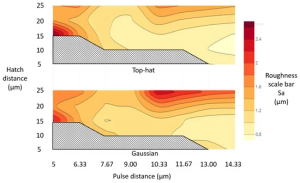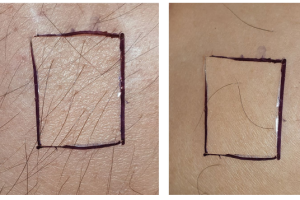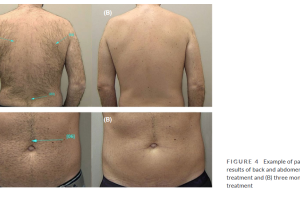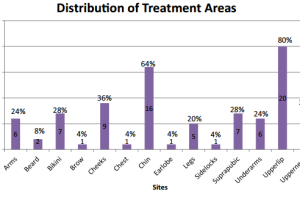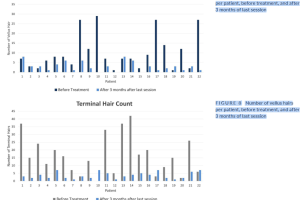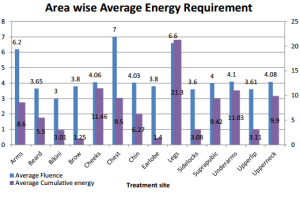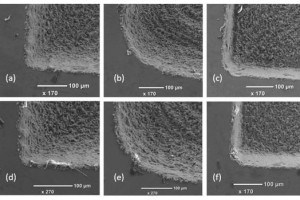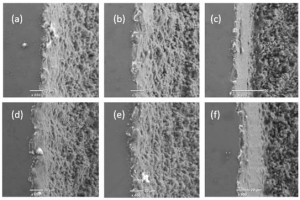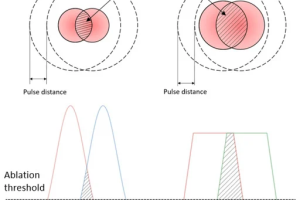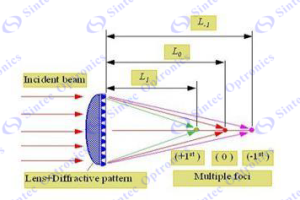Comparison of Triple-Wavelength Devices with Single-Wavelength Lasers
Laser hair removal, as one of the most advanced and effective technologies for permanent hair reduction, holds a prominent position in dermatology and aesthetics. Utilizing the principles of selective light absorption by melanin in hair follicles and energy transfer to various depths of the skin, this technology effectively destroys hair follicles and reduces regrowth.
The evolution of laser technology—from single-wavelength systems to advanced triple-wavelength devices—has revolutionized treatment efficiency, safety, and versatility. Triple-wavelength devices, combining three key wavelengths—808 nm (Diode), 755 nm (Alexandrite), and 1064 nm (Nd:YAG)—offer unique advantages for treating a wide range of skin and hair types.
This advanced technology has not only overcome the treatment limitations of single-wavelength devices but has also expanded its scope to include more sensitive skin types and more resistant hair. The precise mechanism of action and improved energy modulation in triple-wavelength devices enable the treatment of various skin types (from light to dark) and hair textures (from fine and light to thick and dark). These features, along with enhanced safety and reduced risks of side effects such as burns or pigmentation changes, have made triple-wavelength devices a gold standard in aesthetic treatments.
In this scientific and comprehensive comparison, the mechanism of action, clinical applications, and advantages of triple-wavelength devices are examined against single-wavelength systems. This review focuses particularly on the synergistic role of the combined wavelengths in enhancing efficacy, safety, and improving the overall treatment experience for patients.
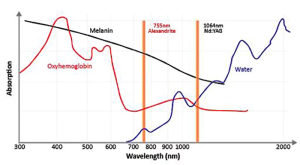
Mechanism of Action of Triple-Wavelength Laser Devices
The laser hair removal technology operates on the principle of selective photothermolysis, where laser light energy is selectively absorbed by melanin in hair follicles and converted into heat. This heat destroys the hair follicle and inhibits its regrowth. Triple-wavelength laser devices (808, 755, and 1064 nm) combine these three wavelengths to provide a more comprehensive and effective performance compared to single-wavelength devices. Below, each wavelength is scientifically and clinically analyzed, highlighting its impact on skin rejuvenation and overall efficacy in hair removal treatments.
Examination of Each Wavelength
- 808 nm (Diode Laser):
The 808 nm wavelength, categorized under diode lasers, is one of the most widely used wavelengths in hair removal treatments. This wavelength penetrates deeper into the skin (approximately 2-3 mm), directly targeting the melanin in hair follicles. Its deep penetration makes it particularly effective for darker skin tones (Fitzpatrick III-VI) and thicker hair, such as body and bikini area hair.
Clinical Benefits:
- Optimal balance between melanin absorption and deeper penetration reduces the risk of damage to superficial tissues.
- Effective for treating thick and deep hair without harming the epidermis.
- Advanced cooling systems in diode devices provide a more comfortable treatment experience.
Impact on Skin Rejuvenation:
The 808 nm wavelength also contributes to collagen regeneration. The heat generated in deeper skin layers stimulates fibroblasts, enhancing collagen production. This process improves skin elasticity and reduces fine lines, offering secondary benefits for skin rejuvenation.
- 755 nm (Alexandrite Laser):
The 755 nm wavelength, known as the Alexandrite laser, has the highest absorption in melanin. This characteristic makes it ideal for lighter skin tones (Fitzpatrick I-III) and finer hair. The penetration depth of this wavelength is shallower than that of the 808 nm, making it suitable for targeting superficial follicles.
Clinical Benefits:
- High efficacy for fine and light-colored hair.
- Suitable for sensitive areas such as the face and upper lip.
- Faster treatment due to higher melanin absorption.
Impact on Skin Rejuvenation:
The 755 nm wavelength, by focusing on the superficial skin layers, is effective in treating age spots and pigmentation irregularities. The heat generated in the epidermis creates a mild exfoliation process, promoting the renewal of surface cells and resulting in brighter and more even-toned skin.
- 1064 nm (Nd:YAG Laser)
The 1064 nm wavelength, belonging to the Nd:YAG laser category, is particularly effective for darker skin tones (Fitzpatrick IV-VI) and thicker, deeper hair due to its deeper penetration and lower melanin absorption. This wavelength provides the greatest penetration depth and significantly reduces the risk of thermal damage to the epidermis.
Clinical Benefits:
- Safe treatment for darker skin tones without the risk of burns or pigmentation changes.
- Suitable for deep and resistant hair.
- Deeper thermal effects effectively destroy hair follicles.
Impact on Skin Rejuvenation:
The 1064 nm wavelength penetrates deeper layers of the skin, stimulating fibroblasts and boosting collagen and elastin production. This process facilitates non-invasive skin lifting and reduces deep wrinkles. It is also effective for treating spider veins and vascular lesions.
Impact of the Triple-Wavelength Combination on Hair Removal Treatment
Combining the 808, 755, and 1064 nm wavelengths simultaneously targets hair follicles at various depths and stages of growth. This comprehensive approach delivers more effective and inclusive treatments for diverse skin and hair types.
Targeting Different Layers of Hair Follicles:
- The 755 nm wavelength targets superficial follicles.
- The 808 nm wavelength penetrates intermediate layers.
- The 1064 nm wavelength reaches deeper layers.
- This method ensures that hair is addressed during all growth phases (anagen, catagen, and telogen).
Reduced Risk of Side Effects:
The combination allows for the use of lower energy levels for each wavelength, minimizing the risk of burns and damage to surrounding tissues.
Enhanced Efficacy:
This integrated approach can achieve over a 90% reduction in unwanted hair after treatment sessions, compared to 70-80% reduction typically seen with single-wavelength devices.
Conclusion:
Triple-wavelength laser devices, utilizing the combined strengths of 808, 755, and 1064 nm wavelengths, are capable of treating a wider range of skin and hair types. Each wavelength offers unique benefits, and their combination maximizes the efficacy, safety, and overall efficiency of treatments. Beyond hair removal, these devices significantly contribute to skin rejuvenation, collagen production, and improved skin texture, making them a valuable tool in modern dermatology and aesthetic practices.
Comparison of Three-Wavelength and Single-Wavelength Devices
Ability to Treat Different Skin and Hair Types
Three-wavelength laser devices combine the 808 nm (diode), 755 nm (alexandrite), and 1064 nm (Nd:YAG) wavelengths, allowing them to treat a wide variety of skin types (from light to dark) and hair types (from fine to coarse). Each wavelength is specifically suited to a particular skin or hair type. The 755 nm wavelength, due to its high melanin absorption, is effective for fine hair and light skin. In contrast, the 808 nm wavelength, with deeper penetration, is more suitable for normal to dark skin and thicker hair. The 1064 nm wavelength, with deeper penetration and lower melanin absorption, is ideal for dark skin, offering a lower risk of burns or pigmentation changes. While single-wavelength devices are typically designed for a single skin or hair type and may not be effective for all patients, three-wavelength devices offer greater flexibility in treatment.
Increased Efficiency and Effectiveness
Three-wavelength devices target different layers of the hair follicle. The 755 nm wavelength affects superficial follicles, the 808 nm wavelength targets the middle layers, and the 1064 nm wavelength impacts deeper follicles. This multi-layer approach allows for faster results and more effective hair reduction in fewer treatment sessions. In single-wavelength devices, only one layer of the follicle is targeted, which may not be sufficient for certain hair and skin types. Clinical results have shown that three-wavelength lasers can provide up to a 90% reduction in unwanted hair after several treatment sessions, while single-wavelength devices typically achieve a 70-80% reduction.
Reduced Risk of Side Effects
Three-wavelength devices, with precise energy adjustments and a focus on the hair follicle, minimize the risk of burns or pigmentation changes. This feature is especially important for darker skin types, which have higher melanin content and are at a higher risk. In single-wavelength devices, energy is concentrated on a specific area of the follicle, which may cause damage to surrounding tissues, leading to side effects such as burns or dark spots. However, in three-wavelength devices, the energy is distributed evenly across the three wavelengths, and each wavelength specifically penetrates a different layer of the follicle. This not only reduces side effects but also accelerates the healing process.
Increased Patient Comfort
Three-wavelength devices are equipped with advanced cooling systems that provide a better treatment experience for patients, reducing pain and discomfort. These systems cool the skin during treatment, minimizing inflammation and the risk of burns, allowing patients to undergo treatment with greater comfort, without the need for local anesthesia. In comparison, single-wavelength devices may cause more pain, especially in sensitive areas or for patients with a lower pain threshold.
General Comparison of Single-Wavelength and Multi-Wavelength Devices
A single-wavelength device typically targets only one type of skin or hair, and may be less effective for finer hair or darker skin. For example, a 808 nm diode laser alone is effective for thick hair and dark skin, but may not perform as efficiently for fine hair or lighter skin, as compared to three-wavelength devices. Similarly, a 755 nm alexandrite laser is more suitable for lighter skin and superficial hair, and is less effective for dark skin or thick hair.
In contrast, a multi-wavelength device, by combining three key wavelengths, offers more comprehensive treatment. These devices can target hair follicles at various depths and treat different hair types (fine, coarse, light, or dark) simultaneously. This results in more consistent and effective results compared to single-wavelength devices, and the treatment process is completed in a shorter time. Additionally, the risk of side effects is reduced, and the patient experience is generally more comfortable.
Comparison of Contact and Non-Contact Models in Three-Wavelength Devices
The three-wavelength laser technology (808, 755, and 1064 nm) has seen significant advancements in recent years, offering both contact and non-contact models for more effective treatments. Each model has its own features, advantages, and drawbacks. Recent studies show that both models can be highly effective for hair removal, but their applications differ based on skin type, treatment area, and patient needs. The following is a scientific examination of these models from various aspects.
Contact Model in Three-Wavelength Laser Devices
In contact models, the handpiece is in direct contact with the skin surface. These models typically feature advanced cooling systems that work directly in contact with the skin. The cooling systems can be either contact cooling or use protective gels. The skin temperature is continuously monitored during treatment, which helps minimize the risk of damage to surface tissues.
Advantages of the Contact Model:
- Better Cooling and Reduced Pain:
The cooling system in contact models directly cools the skin during treatment, which helps reduce pain, especially in sensitive areas such as the bikini line and underarms.
- More Precise Energy Penetration to the Hair Follicle:
Direct contact of the handpiece with the skin ensures that laser energy is more concentrated and precisely delivered to the hair follicle. This leads to increased treatment efficiency and a reduced number of sessions needed.
Reduction of Burn Risk in Contact Models
The cooling system in contact models helps prevent overheating of the epidermis, which significantly reduces the risk of burns and pigmentation changes. This feature is especially important for patients with darker skin (Fitzpatrick IV-VI), as they are at a higher risk of thermal damage. By cooling the skin directly during treatment, the contact model ensures that the epidermis is protected, reducing the likelihood of adverse effects such as burns, hyperpigmentation, or hypopigmentation.
Non-Contact Model in Three-Wavelength Laser Devices
In non-contact models, the handpiece is positioned slightly above the skin’s surface, and laser energy is transferred without direct contact. Non-contact systems, such as those used in Alexandrite lasers from Candela, are widely employed. Three-wavelength lasers that use non-contact technology offer enhanced performance by combining the benefits of all three wavelengths while maintaining the advantages of non-contact treatment.
Advantages of Non-Contact Models:
- Ideal for Sensitive Areas or Patients with Low Pain Threshold:
In non-contact models, because the handpiece does not touch the skin directly, treatment tends to cause less discomfort. This is especially beneficial for patients with a low pain threshold or those undergoing treatment in sensitive areas such as the face and neck. The absence of direct contact allows for a more tolerable experience without compromising the treatment’s effectiveness.
- Reduced Risk of Cross-Contamination:
The non-contact nature of the system minimizes the risk of cross-contamination or infection between patients, making it particularly valuable in clinics with a high turnover of patients. Since the device does not touch the skin, there is less opportunity for bacterial or viral transmission, enhancing patient safety and hygiene standards.
- Increased Flexibility in Distance Adjustment:
Non-contact models allow for more precise control over the distance between the handpiece and the skin. This flexibility enables practitioners to adjust the treatment parameters according to the patient’s skin type, hair thickness, and the treatment area’s specifics. This can lead to more tailored, individualized treatments that optimize the outcomes.
Disadvantages of Non-Contact Models:
- Requires Greater Precision in Distance Adjustment:
Since the handpiece does not make direct contact with the skin, precise distance adjustment is crucial. Any variation in the distance could result in less uniform energy delivery, potentially reducing treatment effectiveness. Accurate calibration is essential to ensure the laser energy is properly focused on the hair follicle for optimal results.
- Less Efficient Cooling Compared to Contact Models:
Non-contact devices typically rely on external cooling systems, such as cold air or gel-based coolants, to manage skin temperature during treatment. While effective, these systems may not provide the same level of direct cooling as contact models, where the cooling mechanism is in direct contact with the skin. This can result in a slightly higher level of discomfort or a potential risk of skin overheating in sensitive areas, especially for patients with a low pain tolerance.
- Possibly Lower Comfort in Certain Areas:
Despite the use of external cooling systems, non-contact lasers might not be as comfortable for patients in certain treatment areas. The lack of direct cooling contact can lead to slightly more discomfort, especially in more sensitive regions such as the face, neck, or bikini line. Patients may experience a higher sensation of heat, which could cause more discomfort or irritation during the procedure.
Summary
Both contact and non-contact models of three-wavelength laser systems offer distinct benefits and limitations. Contact models excel in providing better cooling and more precise energy delivery, making them ideal for sensitive or deeper areas of the skin. They offer superior safety and comfort, especially for darker skin tones or thicker hair. On the other hand, non-contact models provide greater flexibility, reduce cross-contamination risks, and are better suited for sensitive areas or patients with a low pain threshold, although they may require greater precision in distance adjustments and have slightly less effective cooling. Both technologies are highly effective for hair removal, but the choice between contact and non-contact models depends on the specific needs of the patient and the treatment area.
Applications of Different Wavelengths in Contact and Non-Contact Models:
755 nm (Alexandrite Laser):
- Best For: Light skin and fine hair, particularly effective for sensitive areas like the face and neck.
- Contact Model: In contact models, the 755 nm wavelength is highly effective at targeting superficial hair follicles due to its strong melanin absorption, ensuring precision while minimizing risk of skin damage.
- Non-Contact Model: In non-contact models, the same wavelength targets surface-level hair follicles effectively while reducing the risk of skin damage or burns. This makes it an ideal option for treating fine hair on sensitive skin areas, as it ensures a more comfortable experience with minimal risk.
808 nm (Diode Laser):
- Best For: Thicker hair and larger treatment areas such as arms, legs, and the back.
- Contact Model: The 808 nm wavelength penetrates deeper into the skin, making it more effective for treating thick or coarse hair. In contact models, the direct interaction with the skin improves energy delivery and precision, providing more targeted treatment to deeper hair follicles.
- Non-Contact Model: In non-contact models, the 808 nm wavelength also targets deeper follicles, but with the added benefit of cooling systems that help minimize discomfort, making it suitable for larger areas and patients with lower pain tolerance.
1064 nm (Nd:YAG Laser):
- Best For: Darker skin tones (Fitzpatrick IV-VI) and deeper hair.
- Contact Model: The 1064 nm wavelength offers deep penetration while being less absorbed by melanin, making it suitable for darker skin. In contact models, it ensures effective targeting of deep hair follicles with the added benefit of precise cooling systems to prevent burns.
- Non-Contact Model: In non-contact models, the 1064 nm wavelength reduces the risk of thermal injury to the epidermis, particularly for darker skin types, while maintaining effective treatment for deeper hair follicles. The reduced melanin absorption helps avoid complications like pigmentation changes.
Effect of Combining Wavelengths in Non-Contact Models:
In three-wavelength laser devices (808, 755, and 1064 nm) using non-contact technology, the combined use of these wavelengths’ targets hair follicles at different depths and stages of growth simultaneously. This offers several key advantages:
- Faster Treatment for Larger Areas: By addressing different layers of hair follicles, the combination of wavelengths allows for faster treatment of larger areas, making the process more efficient.
- Uniform Results: Treating follicles at multiple depths and growth stages provides more even and consistent results across various hair types and skin tones.
- Reduced Risk of Damage: The ability to treat various follicle depths with different wavelengths reduces the chances of harming surrounding tissue, as the energy is more evenly distributed.
- Less Pain for Patients: Non-contact systems, especially those with advanced cooling technology, tend to cause less discomfort, making the treatment experience more comfortable for patients, especially in sensitive areas.
Final Considerations:
- Contact Models: The contact models offer superior cooling and precise energy delivery, making them more effective for areas with dense hair, such as the underarms or bikini line. These models are also safer for patients with darker skin tones because of their ability to cool the skin directly, minimizing the risk of burns.
- Non-Contact Models: Non-contact models provide greater flexibility in treating sensitive areas and are more comfortable for patients with a low pain tolerance. While they offer effective results, they might not provide as deep a penetration as contact models, which makes them more suitable for treating fine hair and smaller, more delicate areas.

Summary:
Three-wavelength laser devices (808, 755, and 1064 nm) offer a comprehensive treatment for a broad range of skin and hair types. These devices are safer and more effective than single-wavelength lasers, especially for patients with varying skin tones and hair types. The choice between contact and non-contact models depends on the treatment area, the patient’s needs, and the desired level of comfort. Contact models are more appropriate for denser hair and deeper follicle treatment, while non-contact models are more suitable for sensitive areas or patients who experience more pain during treatment.
Uniform Beam Profile Technology (Top Hat) in Laser Science
Top Hat is an advanced technology in laser science that refers to the uniform distribution of laser energy across the target surface. This technology demonstrates its superiority compared to Gaussian or unbalanced beam profiles by creating an energy profile with consistent intensity throughout the laser beam. In Gaussian profiles, the laser energy is higher at the center of the beam and decreases toward the edges, which can lead to uneven therapeutic outcomes and cause unintended side effects.
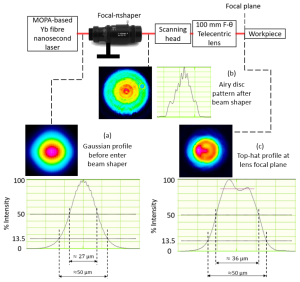
Features and Benefits of Top Hat Technology in Laser Science:
- Uniform Energy Distribution:
- This technology ensures that the laser energy is evenly distributed across the beam. This prevents the formation of hot spots and enhances safety.
- High Precision:
- Ideal for applications requiring precise cutting, drilling, or targeting, such as laser surgery, industrial engraving, and skin treatments.
- Enhanced Effectiveness:
- With uniform energy distribution, treatments are performed with greater accuracy, reducing the number of required sessions and improving overall efficiency.
Overview of Top Hat Technology in Triple-Wavelength Hair Removal Lasers
Top Hat technology in triple-wavelength hair removal lasers (808nm, 755nm, 1064nm) is specifically designed to optimize treatments for hair removal while minimizing side effects. This technology significantly enhances the device’s performance in targeting hair follicles and reducing adverse effects such as burns or pigmentation changes.
How Top Hat Works in Triple-Wavelength Devices:
- Uniform Energy Distribution on the Skin:
- Considering the differences in energy absorption by the skin and the melanin in hair follicles across different wavelengths, the Top Hat profile ensures that energy is uniformly distributed over the treatment area.
- Reduced Risk of Damage to Surrounding Tissue:
- During treatment, devices utilizing Top Hat technology prevent damage to the epidermis, targeting only the hair follicle.
- Increased Safety for Sensitive Skin:
- Due to its ability to reduce hot spots and evenly distribute energy, Top Hat technology is particularly suitable for sensitive and darker skin types (Fitzpatrick IV-VI).
- Higher Effectiveness in Fewer Sessions:
- Since Top Hat technology delivers consistent energy to all hair follicles, therapeutic results are achieved in a shorter time.
Why Top Hat Technology is Superior in Triple-Wavelength Devices:
- The combination of different wavelengths in triple-wavelength devices requires precise energy distribution for various depths and structures of skin and hair. Top Hat technology meets this need by creating a uniform energy profile.
- Compared to traditional profiles (Gaussian), Top Hat technology enables the treatment of more sensitive skin and prevents side effects such as burns or dark spots.
- By reducing operator errors through energy uniformity, this technology ensures safer and more effective treatments.
Examining Top Hat Technology in Triple-Wavelength Laser Devices:
Triple-wavelength laser devices (808nm, 755nm, and 1064nm) utilize Top Hat technology for hair removal. This technology offers an advanced combination of high precision and increased safety for various skin types (from light to dark).
Advantages of Top Hat Technology in Triple-Wavelength Devices:
- Uniform Energy Distribution:
- This feature aids in the precise targeting of hair follicles, reducing the risk of burns or skin discoloration.
- High Efficiency for All Skin and Hair Types:
- With the integration of three different wavelengths, this technology effectively targets hair follicles at various depths, delivering optimal results.
- Enhanced Safety for Sensitive Skin:
- Due to the reduction of hot spots and the use of uniform energy, this technology is particularly suitable for individuals with dark or sensitive skin.
